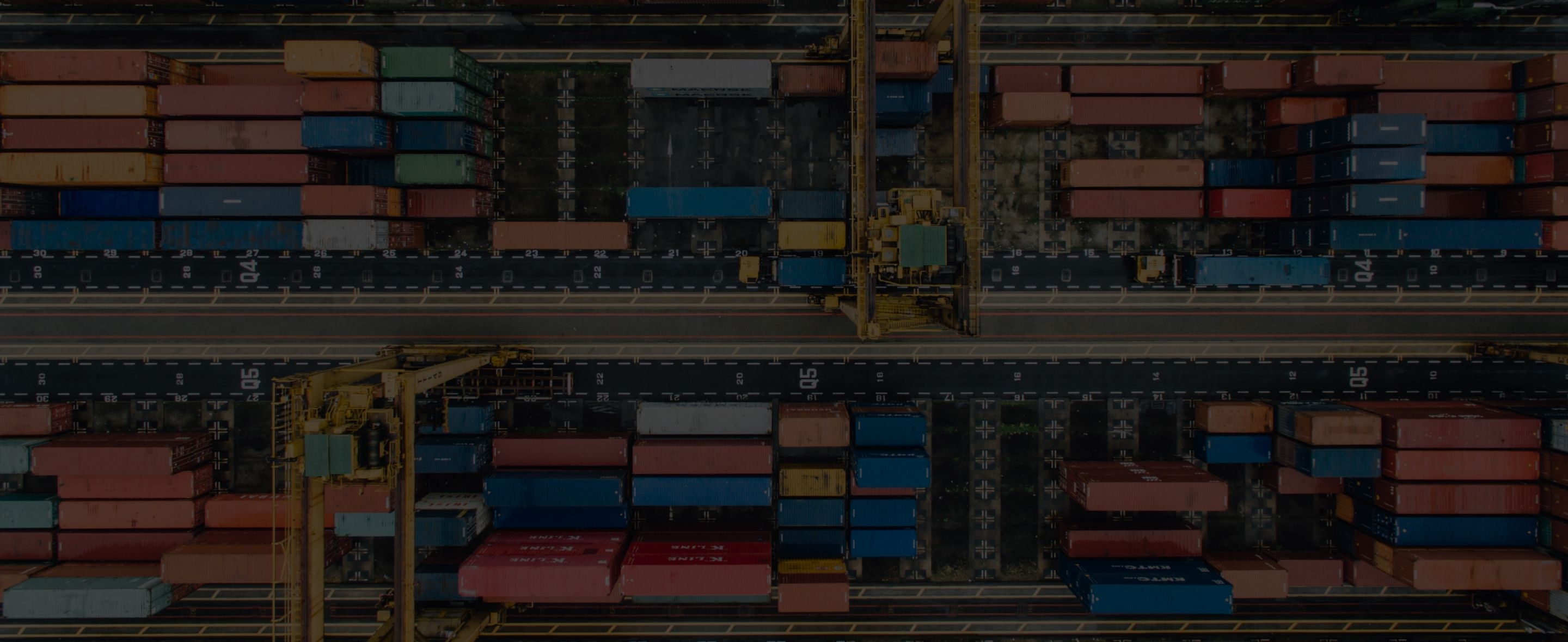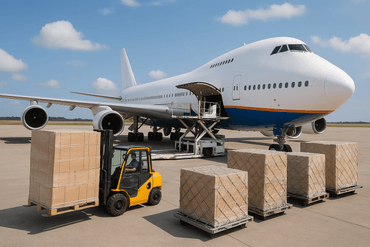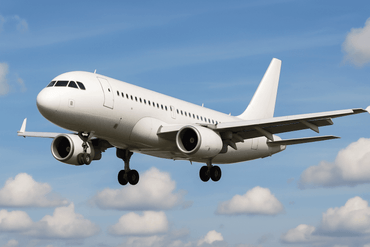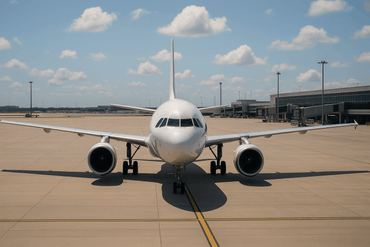
Top 20 ports in the world



With ocean freight responsible for 90 percent of world trade, there’s no doubt the maritime shipping industry plays a crucial role in the maintenance and growth of the global economy.
One of its most important players is ports. More specifically, ports’ capabilities to handle the inflow and outflow of goods, be it as a transshipment point, a point of origin, or a final destination.
Of the top ports in the world, the majority hail from Asia. In fact, 15 (three-quarters) of the top 20 ports in the world are located in Asia, which occupy all of the top 10 spots of the world’s largest and busiest ports.
China’s economic prowess means it should also come as no surprise that the list of top ports in the world is dominated by Chinese ports. Not only is China home to top port in the world, but around half of the top 20 ports here on this list are located in China.
Whether you’re looking for just the top 10 ports in the world or a more exhaustive list, read on. In this article, we bring to you the list of top 20 ports in the world and chart their progress over the past five years.
Top busiest ports in the world
1. Port of Shanghai, China
TEUs handled in 2018: 42.01 million
![]()
The Port of Shanghai has been the world’s busiest port since 2010 when it overtook Singapore to gain the title.
Since then, it’s been charting quite an impressive growth journey.
In 2016, the port handled 37 million TEUs — a then-world record and the most managed by any port in a year. It went on to break its own record the following year, adding 3 million more TEUs to 40 million TEUs. Its record-setting path continued into 2018 when it crossed the 42 million barrier.
This is impressive even by China’s standards, as the Port of Shanghai is now just 3 million TEUs shy of the 45 million TEUs the port had initially set as a target for 2040.
The Port of Shanghai is also where the world’s largest automated container terminal, the Shanghai Yangshan Deep Water Port, is located. The terminal began operations in late 2017.
2. Port of Singapore, Singapore
TEUs handled in 2018: 36.60 million
![]()
Prior to being overtaken by the Port of Shanghai, Singapore was the world’s busiest port from 2005 to 2010.
The port’s history goes back to 1819 when it was constructed to allow the island to bring in resources and compensate for its lack of natural resources.
Today, the Port of Singapore offers connections to over 600 other ports in 123 countries on six continents, with 130,000 vessels calling at the port annually. It is also the world’s busiest transshipment port, transshipping around 20 percent of the world’s shipping containers.
Port authorities are working on developing the Tuas Port in Singapore — currently the world’s largest ongoing port project — with its first berths expected to be operational in 2021. Upon its full completion in 2040, the Tuas Port is expected to be the world’s largest fully automated container terminal with a capacity of 65 million TEUs.
3. Port of Shenzhen, China
TEUs handled in 2018: 27.74 million
![]()
The Port of Shenzhen is the world’s third-largest port and China’s second-largest.
It’s a collective term used to refer to a series of ports located in the region, including the ports of Yantian, Chiwan, Dachan Bay, and Shekou.
Thanks to technological developments in the area, many tech firms, including Huawei, Tencent, and SenseTime, have established their headquarters there. Shenzhen is now a leading global technology hub and is often referred to as China’s Silicon Valley.
The city’s industrial activities and investments have brought increased trade and container movement to the Port of Shenzhen, which, amid its steady rise, took the number three spot from neighboring Port of Hong Kong in 2013.
4. Port of Ningbo-Zhoushan, China
TEUs handled in 2018: 26.35 million
![]()
Formerly two separate entities, the ports of Ningbo and Zhoushan merged in 2006 to become the current fourth-largest port in the world — the Port of Ningbo-Zhoushan.
Despite moving fewer containers than its counterparts Shanghai and Shenzhen, the port of Ningbo actually has a far longer history. It was a flourishing city port when Shanghai was still a fishing village, thanks to its key location along China’s maritime Silk Road for 2,000 years.
Today, the port is known for its infrastructural capabilities, which include a massive crude oil terminal that can hold 250,000 tons of crude oil, and a 200,000+ ton ore loading berth.
The port is also currently undergoing massive expansion, including the construction of a 10-million TEU container terminal, scheduled to be completed in 2020.
5. Port of Guangzhou, China
TEUs handled in 2018: 21.87 million
![]()
The Port of Guangzhou leaped two spots to become the fifth busiest port in the world from its 2017 ranking of seventh-place after a record-breaking number of TEUs handled in 2018.
The 21.87 million TEUs it registered in 2018 marked a 7.4% increase from its 2017 performance and allowed itself to propel above the port of Busan and the neighboring port of Hong Kong.
Its deepwater port, Nansha, is responsible for over 70% of the total container volume at the Port of Guangzhou.
Port efforts are also ongoing to ensure growth. That includes development work on its on-dock rail access, a cold storage facility, and the completion of its automated unmanned parallel container quay in Nansha. The latter, a world’s first, will boost the Nansha area’s container handling capabilities to 20 million TEUs a year.
6. Port of Busan, South Korea
TEUs handled in 2018: 21.66 million
![]()
Stepping away from China for a little, we find South Korea’s Port of Busan — the sixth busiest port in the world.
Busan is also the world’s third-largest transshipment port. It handled 11.46 million TEUs in transshipments in 2018, an 11.5 percent increase from the previous year.
7. Port of Hong Kong, Hong Kong
TEUs handled in 2018: 19.60 million
![]()
The Port of Hong Kong had several reigns as the world’s busiest port: from 1987 to 1989, 1992 to 1997, and most recently from 1999 to 2004 before it was overtaken by the Port of Singapore. Like Singapore and Busan, the Port of Hong Kong is also an important transshipment port.
In the 1990s, the Port of Hong Kong was the strongest and most effective in southern China. But given the rise of China and other surrounding ports in recent years, Hong Kong has since slipped. This is the first time the Port of Hong Kong has not made the top five.
8. Port of Qingdao, China
TEUs handled in 2018: 18.26 million
![]()
Established in 1892, China’s Port of Qingdao is made up of four different port areas, namely Dagang, Qianwan, Guangdong, and Dongjiakou. It’s considered to be one of the most important ports for the West Pacific trade.
The 18.26 million TEUs it handled in 2018 marks a slight decrease from the 18.30 million it managed in 2017.
9. Port of Tianjin, China
TEUs handled in 2018: 16 million
![]()
Port of Tianjin 2014-2018 TEUs handled
The Port of Tianjin is located just 150km from Beijing and is often considered to be the maritime gateway to the Chinese capital.
The transportation of hazardous goods to/from the port was halted for two years in 2015 following an explosion caused by hazardous material that killed over 150 people.
10. Port of Jebel Ali, UAE
TEUs handled in 2018: 14.95 million
![]()
Wrapping up the top 10 of the 20 busiest ports in the world is the Port of Jebel Ali in Dubai, which opened only as recently as 1979.
Not only is it the busiest and largest port in the Middle East, but the Port of Jebel Ali is also the world’s biggest man-made harbor.
11. Port of Rotterdam, Netherlands
TEUs handled in 2018: 14.51 million
![]()
The Port of Rotterdam in the Netherlands dominated the world stage from the mid 20th century to the early 21st century, reigning as the world’s top port for over four decades from 1962 to 2004.
Today, it leads the list of Europe’s top ports, even as its global ranking falls to 11th.
The 14.51 million TEUs it managed in 2018 is a 5.7 percent increase from 2017. The port also appears to be sustaining this growth, with a 3.4 percent year-on-year increase in container throughput in the first half of 2019.
12. Port Kelang, Malaysia
TEUs handled in 2018: 12.32 million
![]()
Malaysia’s Port Kelang is the Southeast Asian nation’s largest port and located a short 38 kilometers away from its capital, Kuala Lumpur. As such, it is often considered the country’s main gateway by sea.
It was formally known as Port Swettenham while it was under British rule, and was renamed to Port Kelang in 1972.
13. Port of Antwerp, Belgium
TEUs handled in 2018: 11.1 million
![]()
The 13th busiest port in the world and second in Europe is Belgium’s Port of Antwerp.
Located in the north of the country near the Dutch border, the Port of Antwerp has been registering year-on-year growth over the past six years, with the 11.1 million TEUs handled in 2018 yet another record for the port.
The port is currently undergoing talks for a merger with the Port of Zeebrugge.
14. Port of Kaohsiung, Taiwan
TEUs handled in 2018: 10.45 million
![]()
Previously a natural lagoon, the Port of Kaohsiung was developed into a harbor and became operational in 1858. Today, it is Taiwan’s biggest seaport.
The port is currently undergoing expansions and works to its infrastructure, more specifically to its 7th container terminal, work for which is expected to be completed by 2023.
15. Port of Xiamen, China
TEUs handled in 2018: 10 million
![]()
Located in the southern province of Fujian, the Port of Xiamen is the world’s 15th largest port.
Dredging works are ongoing at the port’s Haicang sub-channel in order to accommodate larger vessels of 20,000 TEU — up from its current 13,000 TEU limit. The project is expected to be completed in 2021.
16. Port of Dalian, China
TEUs handled in 2018: 9.77 million
![]()
China’s Port of Dalian is located in the northeastern Liaoning province and is the country’s northernmost ice-free port.
The port offers connections to 116 different cities via over 300 routes.
17. Port of Los Angeles, United States
TEUs handled in 2018: 9.46 million
![]()
The first US port to appear on the list of top ports in the world is none other than the Port of Los Angeles in California.
Commonly known as America’s Port, the port of LA connects the two global economic powerhouses, China and the US, and plays a major role in the Transpacific trade.
18. Port of Tanjung Pelepas, Malaysia
TEUs handled in 2018: 8.96 million
![]()
Malaysia’s Tanjung Pelepas port is the third Southeast Asian port on the list of top ports in the world, after the Port of Singapore and Port Kelang.
Strategically situated near the Strait of Malacca and Straits of Johor, the port is seeking to expand to more than double its capacity from the current 12.5 million TEUs to 30 million TEUs by 2030.
19. Port of Hamburg, Germany
TEUs handled in 2018: 8.73 million
![]()
The Port of Hamburg in Germany is Europe’s third-largest and busiest port and is located in the northern German city of Hamburg.
Its 300 berths and 43km-long sea quay play host to 8,000 vessels per year and the port has four container terminals to accommodate the 8.73 million TEUs it handles.
20. Port of Long Beach, United States
TEUs handled in 2018: 8.09 million
![]()
The final port on this list of top ports in the world is the Port of Long Beach, the second US port to make the list.
The Port of Long Beach is also located in the west coast state of California and just a stone’s throw away from the Port of Los Angeles, which is also in San Pedro’s Bay.
- 1. Top busiest ports in the world1. Port of Shanghai, China2. Port of Singapore, Singapore3. Port of Shenzhen, China4. Port of Ningbo-Zhoushan, China5. Port of Guangzhou, China6. Port of Busan, South Korea7. Port of Hong Kong, Hong Kong8. Port of Qingdao, China9. Port of Tianjin, China10. Port of Jebel Ali, UAE11. Port of Rotterdam, Netherlands12. Port Kelang, Malaysia13. Port of Antwerp, Belgium14. Port of Kaohsiung, Taiwan15. Port of Xiamen, China16. Port of Dalian, China17. Port of Los Angeles, United States18. Port of Tanjung Pelepas, Malaysia19. Port of Hamburg, Germany20. Port of Long Beach, United States
Related Articles


